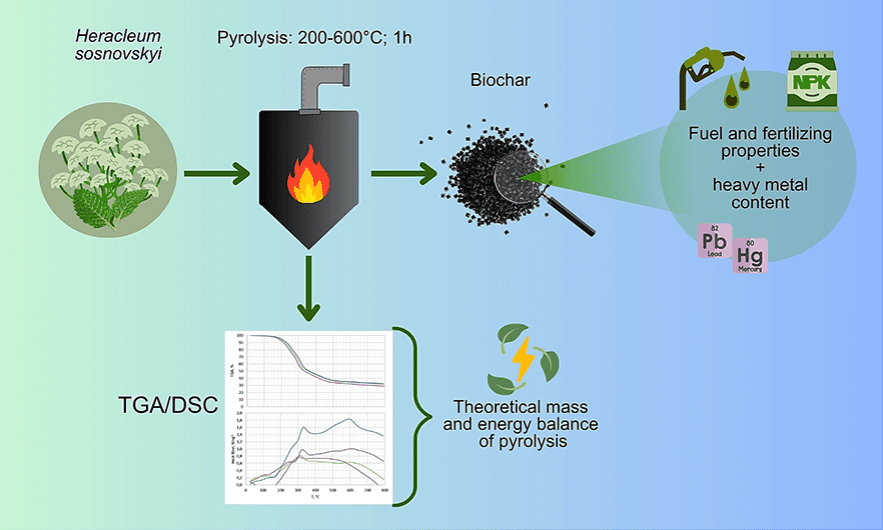
The Heracleum sosnowskyi is a highly invasive plant species known for its rapid spread and the significant threat it poses to the ecosystem and human health, primarily due to its furanocoumarin content. In the present study, for the first time the pyrolysis process (200–600 ◦C) of Heracleum was conducted, demonstrating its efficacy in utilizing the material as feedstock and generating valuable solid by-products. It was found that biochar produced at temperatures of 200–300 ◦C is suitable for solid fuel production (HHV 20.2–24.1 MJ/kg) and has strong hydrophobic properties, while pyrolysis over 400 ◦C promotes the improvement of fertilizing properties by increasing the content of micro and macronutrients (K=112.4 g/kg at 600 °C). The mass and energy analysis proved that in specific conditions (for dry > 300 °C; for wet > 400 °C), pyrolysis can be an effective way for Heracleum biomass conversion into valuable biochar without the need for external energy.
Read the full publication: Swiechowski, K.; Rosik, J.; Bednik, M.; Szatkowska, B.; Tomczak-Wandzel, R.; Stegenta-Dąbrowska, S. Bioresource Technology 2024, 408, 131169. Heracleum sosnowskyi pyrolysis – Energy and environmental aspects of biochar utilization – ScienceDirect